I love all of the seasons in Japan. Summer is great because Ubuyama is up in the mountains, and so we escape the oppressive heat that brings gallons of sweat trickling down the faces of those who live in the city. Summer also means going to the beach, and trying to avoid the jellyfish (kujira).
Fall is great because the heat and the humidity gradually decrease into the most comfortable zone of the whole year. The Cosmos flowers come into full bloom at the Higothai Koen and Kuju Hana Koen, and young couples flock to all of the makeout points around Aso. Also, areas that are densely packed with deciduous plants turn amazing colors (my favorite area during this time is Kikuchi Gorge). Towards the end of Fall it starts to get cold, and so the kotatsu table is dusted off and perpetually switched on.
Winter is very cold, but it means that I can go snowboarding again, and practice driving in the snow. During these cold months I cook things that are hot and warm the body from the inside out. This past winter I was able to tweak my nabe to new heigths of deliciousness, with new layers of flavor.
Spring means Hanami, and also means that I can return to wearing shorts and short sleeved shirts. This is my favorite time of year, because life returns to Aso. The insects pupate, hatch, and otherwise appear again, and so I pull out the flyswatter and keep the pesticide ready to put the hurt on any centipede unlucky enough to find its way into my home. The days last longer, and everyone is in a good mood and ready to enjoy the good weather.
The three flowers that mean spring to me in Kyushu would have to be sakura (cherry blossoms), daffodils, and nanohana (rapeseed flower). Unfortunately, I forgot to take pictures of nanohana, so you will just have to take my word for it- they are beautiful. The fields of nanohana are reminiscent of the fields of mustard back home, but the stalks are thicker and more of a luscious green, and the flowers are larger and make the yellow of the mustard look muted in comparison.
I don't consider myself a "plant person", and any plant that I have ever cared for in my house has died or come very close to it. However, seeing these vibrant flowers and feeling the change of the seasons has made me develop an interest in flowers. You can't know what I'm talking about unless you have experienced it, and my descriptions will probably sound overly sentimental. Well, maybe pictures will convey what my clumsy verbage can not.

The sakura is percieved by many as a metaphor for the fleeting nature of life (if you have taken any classes on Japanese culture or even watched television programs on the Discovery Channel, specifically ones on Ukiyo-E, then this should sound familiar), but I just like to look at them and to sit underneath the sakura as they flutter down around me. These blossoms last only about 2 weeks, and many times strong winds and rains can expedite the process. If you are planning on coming to Japan, I would recommend coming during Hanami season if possible. Trust me, it's worth it.
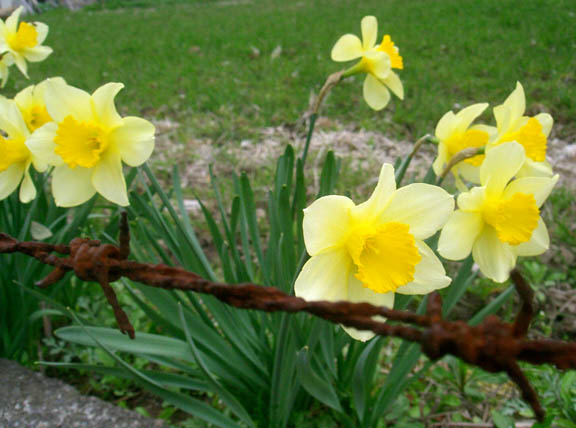
Around the same time that the sakura come into full bloom (mankai), the nanohana and daffodils show off their yellow petals. I like this picture because the daffodils behind the barbed wire is symbolic. I don't know what exact symbol it is but trust me, there's some symbolism to be found here.
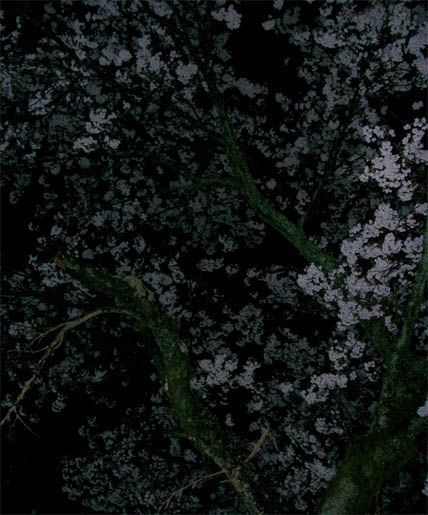
One night I drove up to my house at night, and my headlights cast the sakura in an interesting lumination. Hanami held at night time are equally as fun as the ones at day, and lend an interesting perspective on flower viewing. Last year, my friends made me drink a whole bottle of shochu, and I lost two bouts of Sumo to two drunk salarymen whom I had never met before that night. I learned that it's a good idea to grab for the underwear and apply the atomic wedgie instead of trying to grapple conventionally. They consider it a loss if even one of your knees touches the ground!
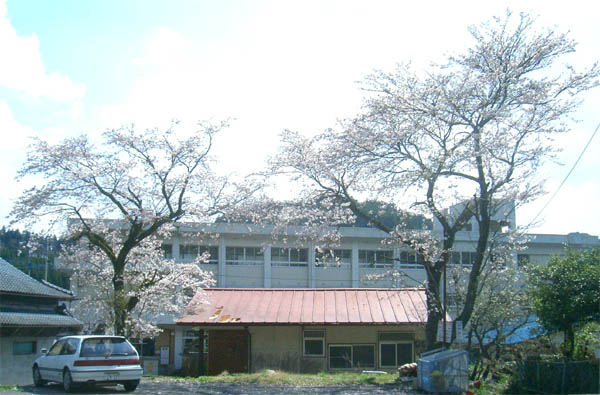
My house is flanked by two beautiful sakura trees, and are perfectly placed for barbecues in the parking lot.
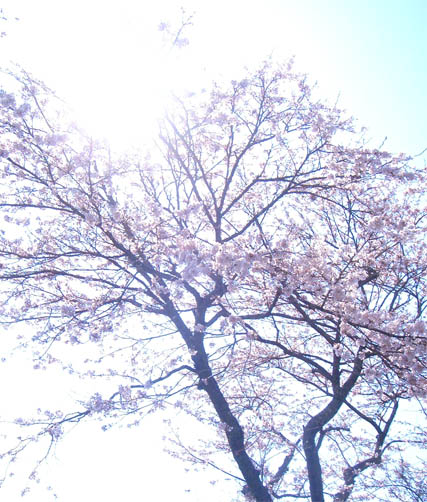
One of the trees in front of my house.

This picture was taken at Aso Jinja in Ichinomiya. There are many beautiful sakura on the grounds of this famous shrine.
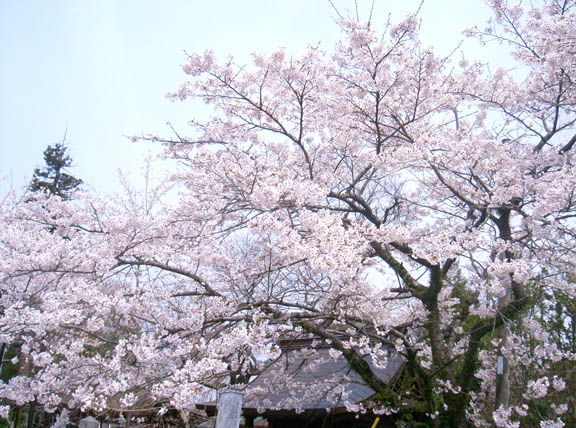
More sakura from Aso Jinja.

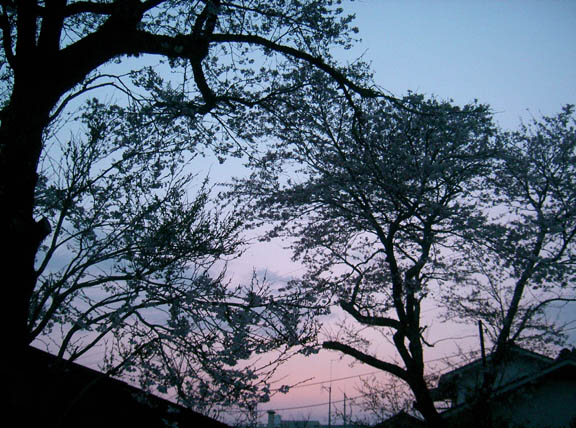

Comments (3)
So now you know why we always surrounded ourselves with carefully-chosen trees and flowering plants, or created lush country gardens as an exercise in "painting exceptional living landscapes". As seasons shift, the plants rise up with various shades of beauty, in tandem and harmony, like a pleasingly nostalgic symphony. The trees and flowers you describe will always be with you throughout life and remind you of days spent marvelling at simple, impermanent beauty.
Posted by: yomama | April 15, 2004 12:19 AM
Posted on: April 15, 2004 00:19
Adam, the floral shots you took during the Hanami were stunning! Love the close-ups of the Sakura hana and the daffodils (behind the barbed wire). Symbolism? Rememberance of JA's in camp during WWII.
That's what I think. Curious about nanohana...can you
post a color photo of this flower?
Posted by: Robert Shimatsu (Rocky) | April 16, 2004 8:51 AM
Posted on: April 16, 2004 08:51
I'm glad that you enjoyed the photos. It's too bad that there is no Hanami in America, or at least not like in Japan. I went to J Town in San Francisco when the cherry blossoms were in bloom, but it was a dissapointment (except for the Anime otaku teenagers who were walking around dressed up as their favorite characters).
Thoughts of internment did cross my mind, and I guess that the bright yellow behind the rusty barbed wire could be a parallel to the struggle of Asians to overcome racial discrimination in general.
I will try and find a good picture of the nanohana to post. Good to hear from you.
Posted by: Adam | April 16, 2004 10:49 AM
Posted on: April 16, 2004 10:49